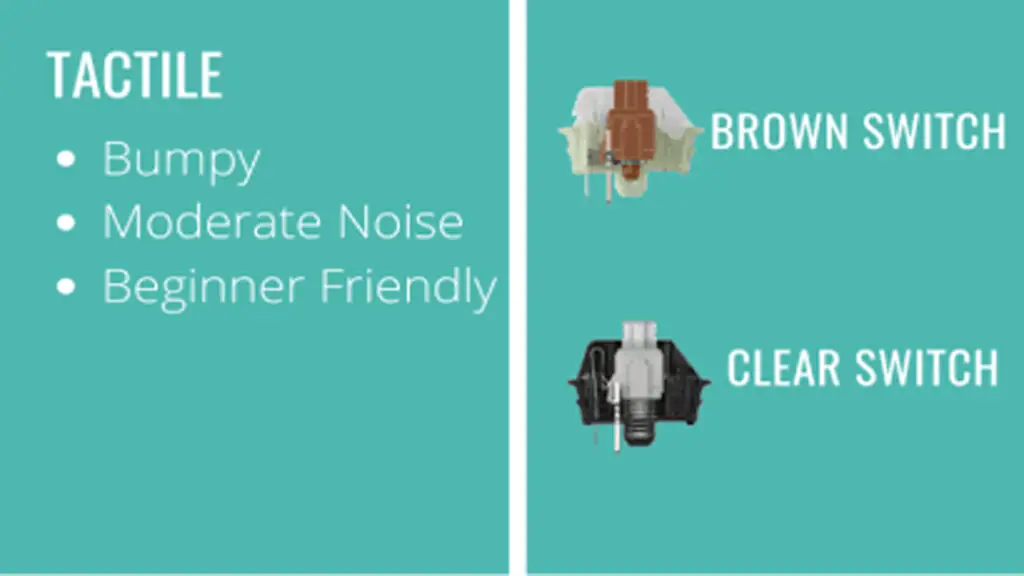

However, by using O-rings, the sound may be decreased even more. The tactile feedback of the tactile switch (the bump), on the other hand, can create a tiny sound. Gamers must focus on gameplay audio, and the loud feedback from a clicky key switch can be distracting. When compared to a clicky switch, both linear and tactile switches are suitably quiet. The crisp snap of a clicky switch provides a white noise that can drown out the surrounding distractions. Based on the sound and feedback given by tapping the mechanical switch, they can be divided into three categories, linear, tactile, and clicky. Generally, tactile switches are used more for gaming than clicky switches. The tactile switch doesn’t have the same hardware to make the loud noise but emits a softer clicking sound. The major difference between these two switches is that the clicky switch creates an audible sound with every stroke. Auditory FeedbackĪnother element of a switch’s tactile feedback is the amount of noise the switch makes with each keystroke.

These specs make typing quicker, which can be beneficial in fast-paced gaming. Tactile switches come with options that have shorter actuation points and provide less resistance than clicky switches. This sensation is part of the switch’s tactile feedback. The tactile bump is a small piece that causes a slight resistance whenever the key is pressed down. Both switch types have what’s known as a “tactile bump” built into the mechanism.

Tactile and clicky switches share many similarities. We also have an article explaining red vs brown switches for those who want to explore some of the specific tactile and linear switch designs. If you’d like to know more, read our article on linear vs tactile vs clicky switches. While we’re only covering tactile and clicky switches, there are three main types of mechanical switches. Given that the selection of many switch specs hinges on personal preference, it’s good to travel to an electronics store and test the various switch types before purchasing.


 0 kommentar(er)
0 kommentar(er)
